Investigations are still underway as to what happened in Lahaina, Maui, earlier this month, but everyday more information emerges about the likely factors that led to the deaths of what is expected to be hundreds of residents, including many children.
Some of the factors were known years or months in advance, such as the risk of nonnative grasses, while others were known days in advance of the fire, which so far as officially claimed at least 115 people, with search efforts still underway.
There were also some decisions made on the fatal day of August 8, as firefighters ran out of water and cars were blocked from escaping the town.
Here are some of the failures we know of to date:
1) Local Power Company Did Not Shut Off Power Before the Fires
Despite the National Weather Service issuing a Red Fire Warning by Monday, August 7 — the day before the fires broke out — the power on the island was never preemptively shut off.
A local news report warned on Monday: “Hawaii Island residents should secure outdoor items and avoid any outdoor activities that involve the use of fire or a fire ignition source. Damaging winds could blow down trees and power lines.”
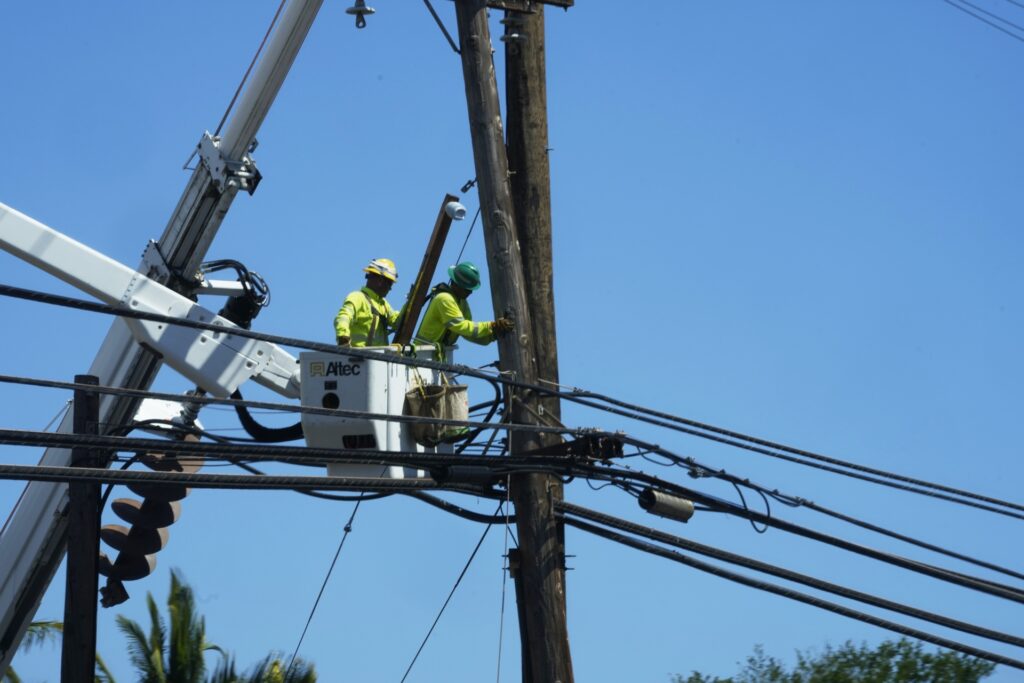
Linemen work on poles Aug. 13, 2023, in Lahaina, Hawaii, following a deadly wildfire that caused heavy damage days earlier. When the winds of Hurricane Dora lashed Maui Aug. 8, they struck bare electrical lines the Hawaiian electric utility had left exposed to the elements. (AP Photo/Rick Bowmer, File)
Downed power lines are suspected to be the origin of the fires, which at one point numbered four across the island.
According to Hawaiian Electric, there were indeed downed power lines as early as Monday evening — hours before the first fire began.
645p: ~410 customers without power in the East End of Molokai. Crews are responding. Outage due to downed pole caused by high winds. Mahalo for your patience. #MolokaiOutage
— Hawaiian Electric – Maui County (@MauiElectric) August 8, 2023
Three law firms have filed a class-action lawsuit against Hawaiian Electric, which supplies 95 percent of the state’s electricity. The complaint claims that the company “inexcusably kept their power lines energized during forecasted high fire danger conditions,” according to Spectrum News.
The complaint cites a Hawaiian Electric funding request from June 2022 that said, “The risk of a utility system causing a wildfire ignition is significant. The company declined to comment to Spectrum News.
Last week, Maui County also sued Hawaiian Electric, as reported by Breitbart News’s Joel Pollak.
However, the power company is hardly the only one to blame.
2) Lahaina Residents Were Not Preemptively Evacuated
Despite the warning from the National Weather Service and the risk of fire as well as power outages from downed power lines, residents were never evacuated.
According to the Los Angeles Times, there were indications the entire town would be threatened if a fire started:
Given the fire weather conditions in effect the day of the Maui blaze, it’s likely that investigators will examine whether officials should have ordered widespread evacuations in Lahaina that morning. With downslope wind and low humidity predictions, there were indications the entire town would be threatened if the initial fire got out of control.
Indeed, some schools had closed in Lahaina due to power outages, but instead of the children being evacuated, many remained at home while their parents went to work.
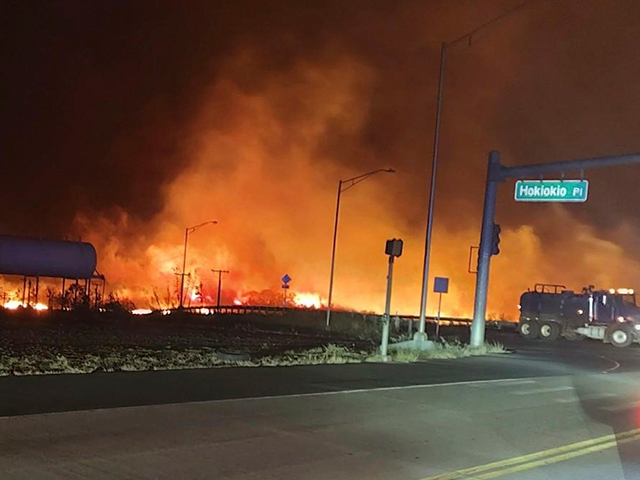
This photo provided by County of Maui shows fire and smoke filling the sky from wildfires on the intersection at Hokiokio Place and Lahaina Bypass in Maui, Hawaii on Tuesday, Aug. 8, 2023. (Zeke Kalua/County of Maui via AP)
3) Maui Authorities Ignored the Nonnative Grass Issue for Years
Maui authorities have neglected the risk posed by highly-flammable grasses that surrounded Lahaina for years, according to reports.
According to the San Francisco Chronicle, the abandonment of tens of thousands of acres of pineapple and sugar cane fields allowed for the growth of “highly combustible nonnative grasses” in their place.
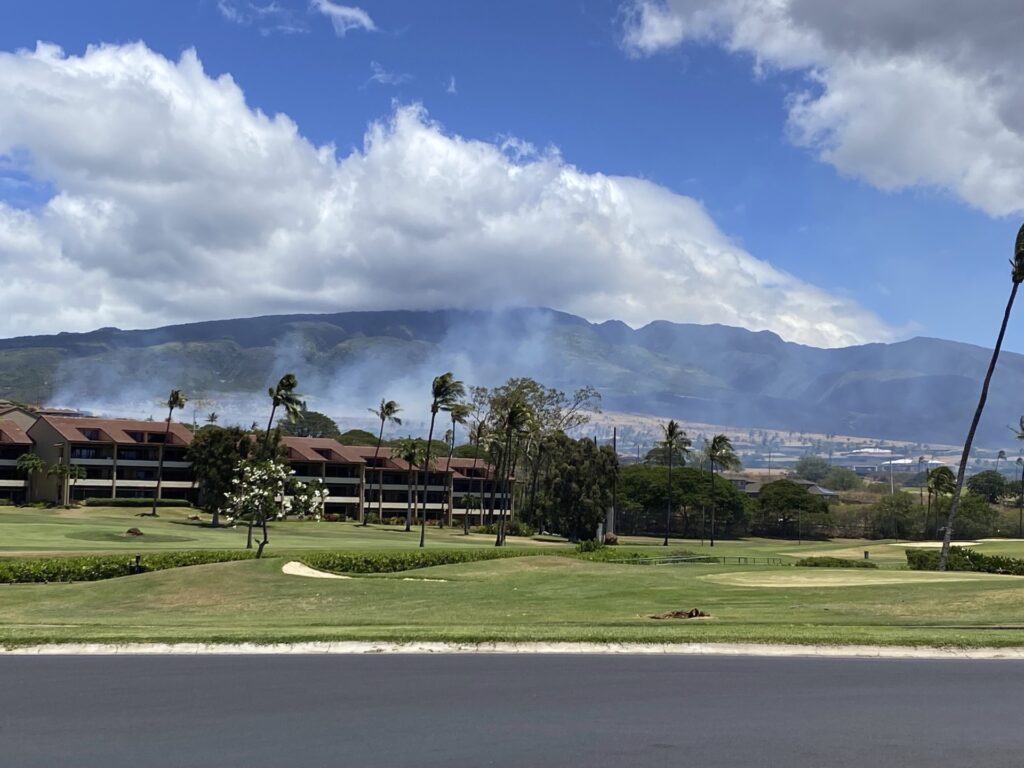
Smoke rises in the hills above the Kaanapali resort hotel area of Lahaina, Hawaii on Saturday, August 26, 2023. A brush fire on Saturday prompted Maui authorities to evacuate residents from a neighborhood of Lahaina, just a few miles from the site recently ravaged by blazes. (Cindy Ellen Russell/Honolulu Star-Advertiser via AP)
Although Hawaii has not seen a lot of wildfires historically, since the 1990s, fires have been increasing along with the growth of the invasive grasses, according to the Chronicle.
Breitbart News’ Joel Pollak noted, “As in California, however, where environmentalists and courts have thwarted efforts to manage forests by removing potential fuel for wildfires, poor management of vegetation on former farmland is a major factor in the recent emergence of devastating wildfires.”
4) Firefighters Left the Lahaina Fire Too Early, Officials Called It “100% Contained”
After a fire broke out in Lahaina at around 6:30 a.m. local time on Tuesday, the County of Maui sent out a notice on Facebook that the fire was “100% contained” shortly before 9 a.m. The assurance put “many residents at ease,” according to the Associated Press.
The Lahaina fire reignited around 2 p.m. “While many of Maui County’s fire crews work to extinguish the Upcountry fire on the eastern half of the island, the wind is toppling power poles and scattering embers like seeds in Lahaina,” the AP reported.
According to the Los Angeles Times:
Among the best practices in fighting wildfires is the “mop-up,” the difficult task of extinguishing burning materials all the way down to the mineral soil and cooling ash pits, which can take several days after a fire is considered “contained.”
“Mop-up is difficult, dirty and lacks the excitement of initial attack and direct suppression; however, it is a critical phase in the suppression process because remaining burning debris may rekindle,” a training manual for the National Wildfire Coordinating Group says. “Mop-up must be thorough because a small spark or flame could rekindle, starting another and perhaps larger fire.”
It is not clear who made the decision for the firefighters to leave the Lahaina fire.
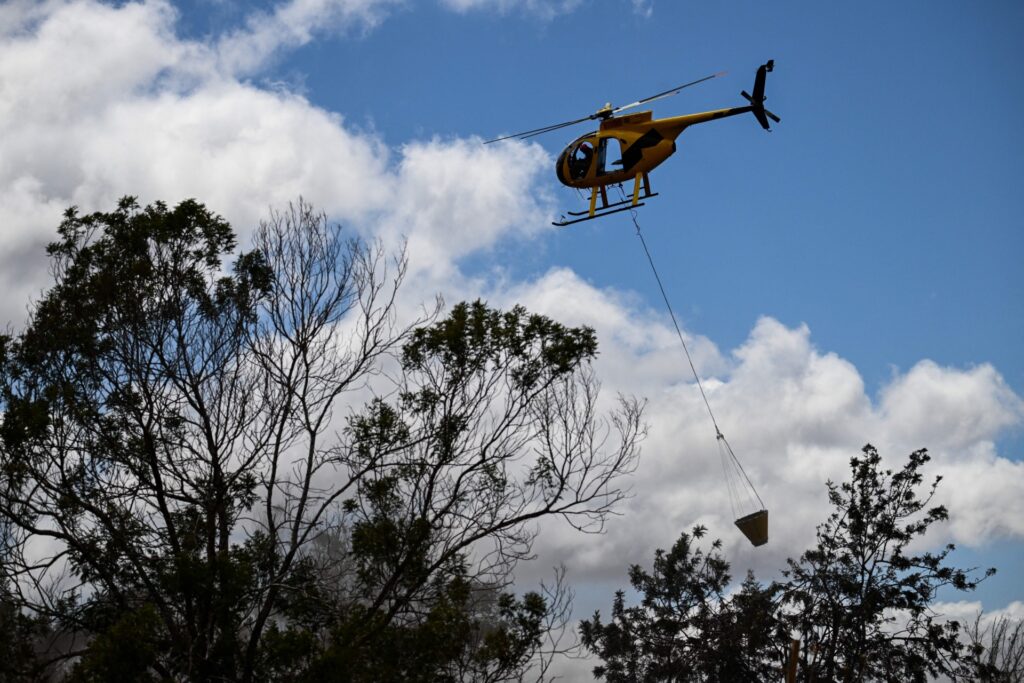
A firefighting helicopter drops water as Maui County firefighters extinguish a fire near homes during the upcountry Maui wildfires in Kula, Hawaii on August 13, 2023. (PATRICK T. FALLON/AFP via Getty Images)
Hawaii Gov. Josh Green told CBS News that the firefighters had to go to three other fires that had started.
“There’s no excuses to ever be made. But there are finite — there are finite resources sometimes in the moment,” he said.
K9 Units Assist in Search for Survivors in Lahaina Following Wildfires
DVIDS via Storyful5) Emergency Sirens Were Never Sounded to Warn Lahaina Residents
Maui officials have admitted they did not sound emergency sirens meant to warn residents to evacuate.
Herman Andaya, then-chief of Maui Emergency Management Agency, said at a press conference the sirens were meant to warn residents to flee up the mountain in the case of tsunamis or approaching storms and “would not have saved those people” who died in the fire. He also said he did not regret not sounding the alarm, since it would have caused residents to flee uphill into the fire. He was fired after those remarks.
“The public is trained to seek higher ground in the event that the sirens are sounded,” Andaya said. “Had we sounded the sirens that night, we were afraid that people would have gone [mountainside], and if that was the case, they would have gone into the fire.”
Andaya said local officials instead decided to sent out messages via cell phone, TV and radio. However — many residents had lost cell phone access and electricity, and either did not receive the alerts, or received them too late.
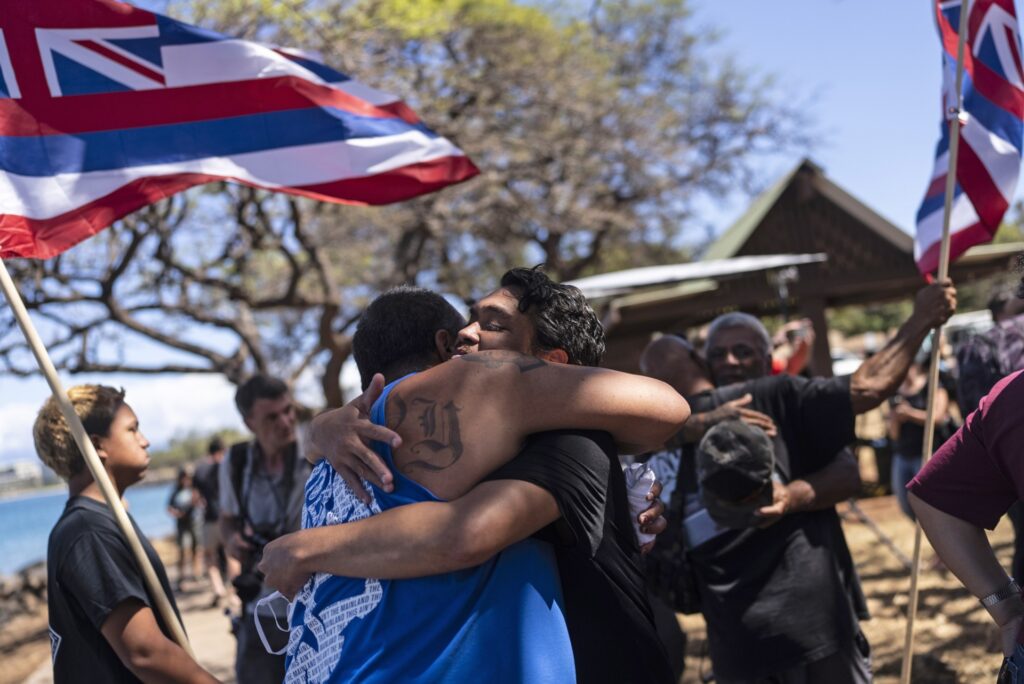
Lahaina, Hawaii, residents, who are affected by a deadly wildfire that devastated the community, hug one another after a news conference in Lahaina, Hawaii, Friday, Aug. 18, 2023. (AP Photo/Jae C. Hong)
Lahaina resident Cole Millington said he was already in his truck trying to evacuate when he got an emergency alert on his phone, calling it “useless.”
“We have tsunami warnings that I think should have been utilized,” Millington told CNN. “So many of [us] felt like we had absolutely no warning.”
Hawaii’s own official government website states that the “all-hazard siren system” can be used for a “variety of both natural and human-caused events,” including “wildfires.” Indeed, the sirens were sounded on Maui on Saturday, after a new brush fire broke out in West Maui.
6) The Release of Water to Fight the Fire Was Delayed
As the wildfires burned, a state water official delayed the release of water that landowners wanted to use to protect their properties, according to the Honolulu Civil Beat.
According to the outlet, the West Maui Land Co., which manages agricultural and residential subdivisions in West Maui, had asked the Department of Land and Natural Resources’ water resource management division to release water to stop the spread of the fire.
DLNR’s deputy director for water resource management M. Kaleo Manuel reportedly balked at West Maui Land Co.’s request. Manuel wanted West Maui Land Co. to get permission from a taro farm first. “Manuel eventually released water but not until after the fire had spread. It was not clear on Monday how much damage the fire did in the interim or whether homes were damaged,” the report said. Manuel was reassigned to a new position after the revelation.
The report did not cite a reason the hydrants ran dry, but noted that West Maui’s water system relies on electrical power to pump water through the network and deliver it to fire hydrants.
John Stufflebean, the county’s director of water supply, said backup generators allowed the system to maintain sufficient overall supply throughout the fire, but that as the fire ravaged homes, water began spewing out of melted pipes, which depressurized the network that supplies the hydrants.
“The water was leaking out of the system,” he said.
7) A Key Exit Route Out of Lahaina Was Barricaded
Just as the fire was spreading in Lahaina, a key route out of the town was blocked, trapping residents trying to evacuate.
According to the Associated Press, the Lahaina Bypass Road was closed, blocking the only route south out of Lahaina. Maui Police Chief John Pelletier claimed at a press conference that officers had not stopped people from leaving, but did try to prevent them from driving over downed power lines.
One resident, Nate Baird, told the AP that when he and his family drove south to escape, the way was blocked by cones and a crew working on downed electric poles, and workers were motioning for everyone to turn back toward Lahaina.
Baird and his family decided to ignore them and swerved around the cones, heading south. They made it to a neighboring town by 4:18 p.m.
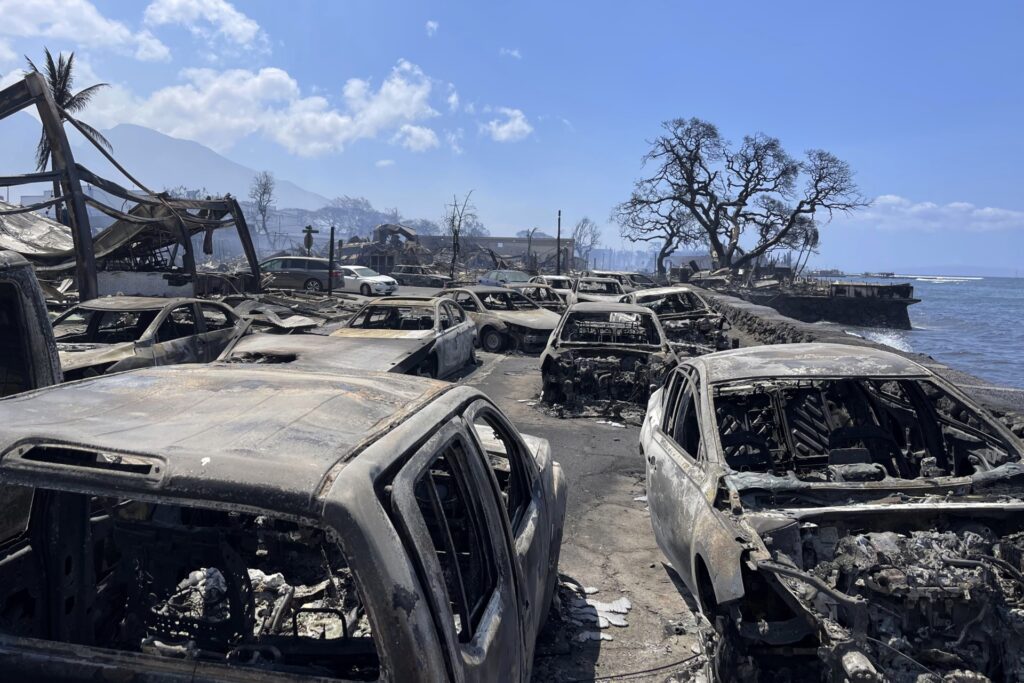
In this photo provided by Tiffany Kidder Winn, burned-out cars sit after a wildfire raged through Lahaina, Hawaii, on Wednesday, Aug. 9, 2023. Blocked roads ultimately contributed to the number of burnt and abandoned vehicles. (Tiffany Kidder Winn via AP)
“Nobody realized how little time we really had,” Baird told the AP. “Like even us being from the heart of the fire, we did not comprehend. Like we literally had minutes and one wrong turn. We would all be dead right now.”
Maui County posted on its Facebook page at 5:20 p.m. that the road leading south out of Lahaina had been cleared and was open for traffic, but by then, people had already died or jumped into the ocean, according to the AP.
Follow Breitbart News’s Kristina Wong on Twitter, Truth Social, or on Facebook.
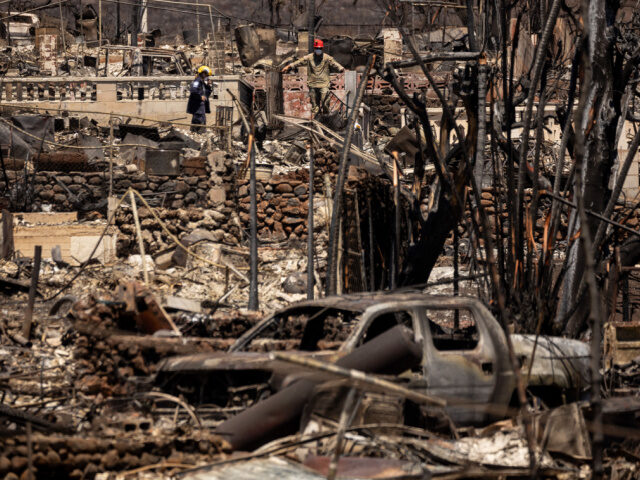
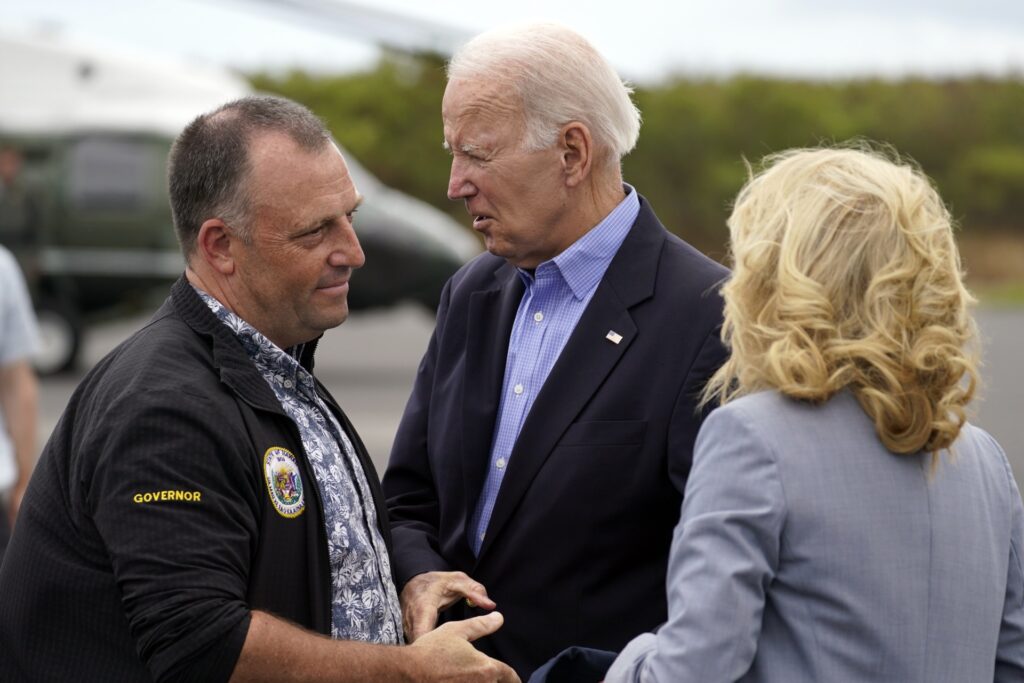
COMMENTS
Please let us know if you're having issues with commenting.